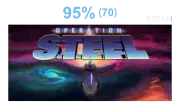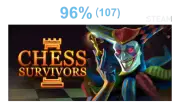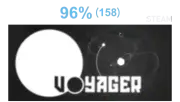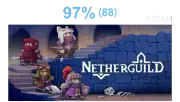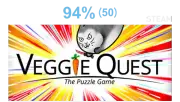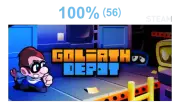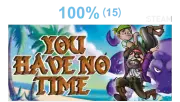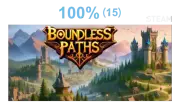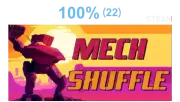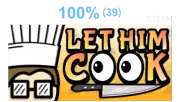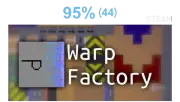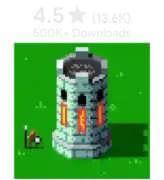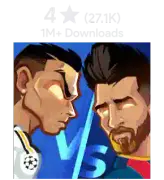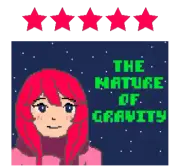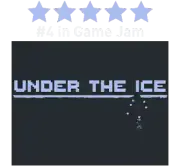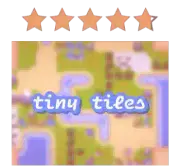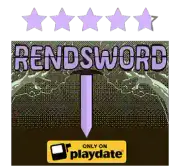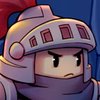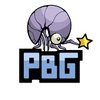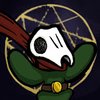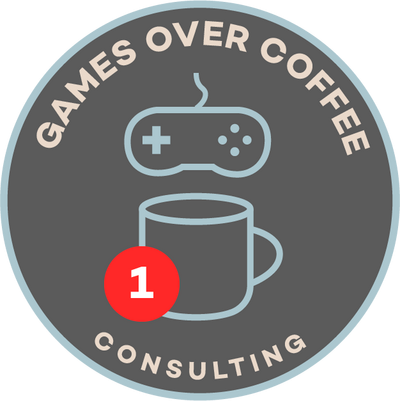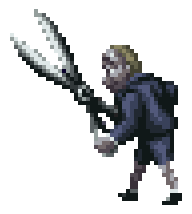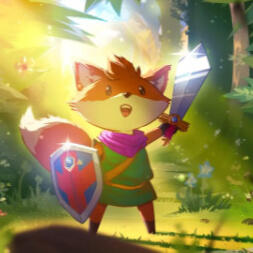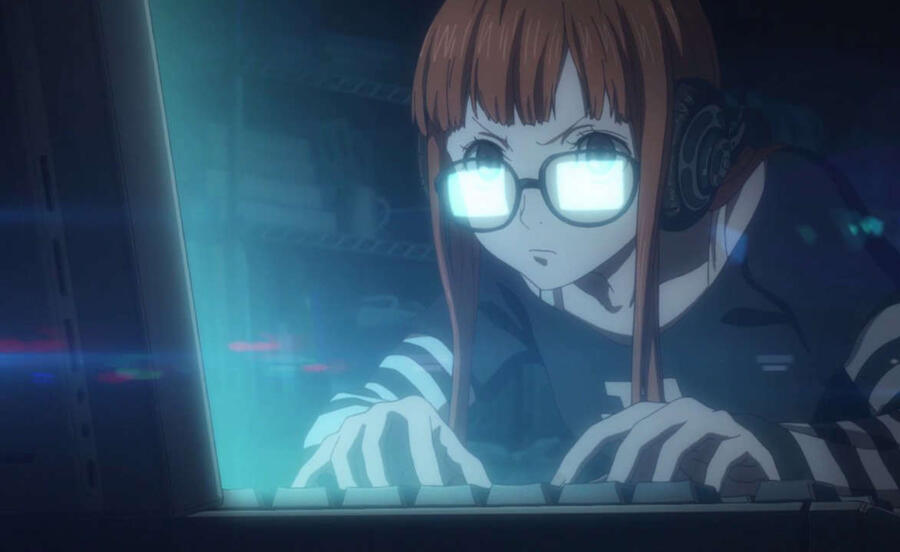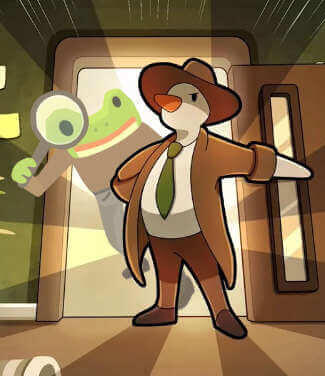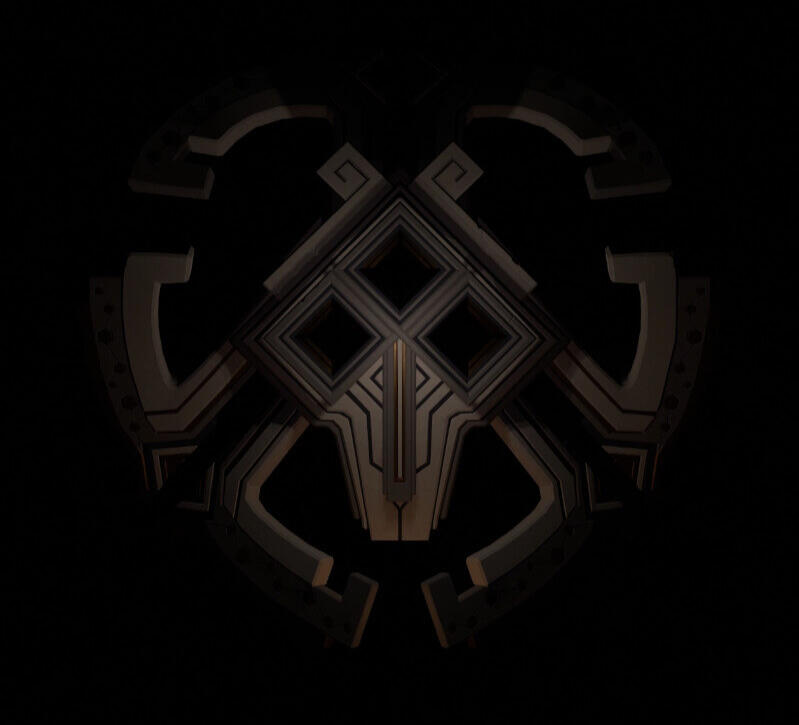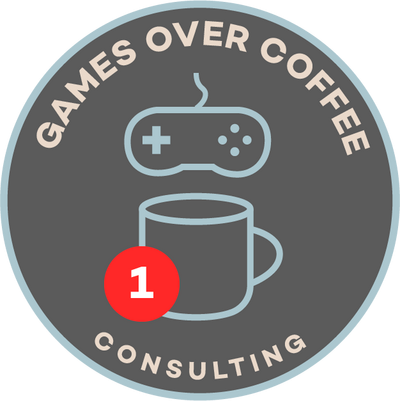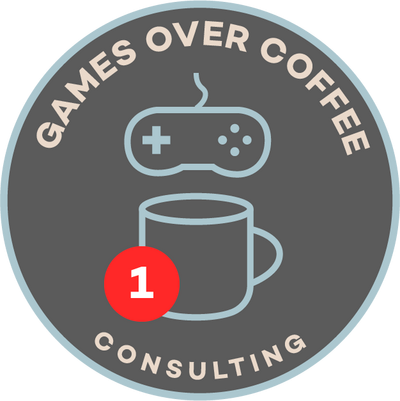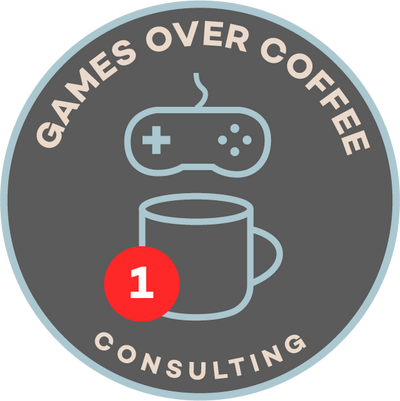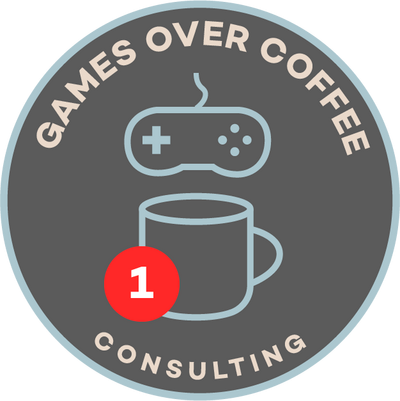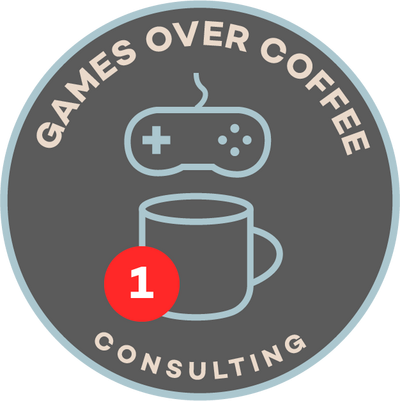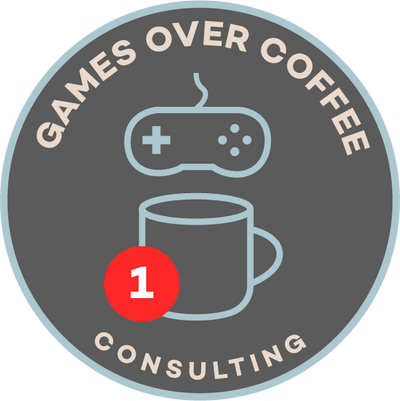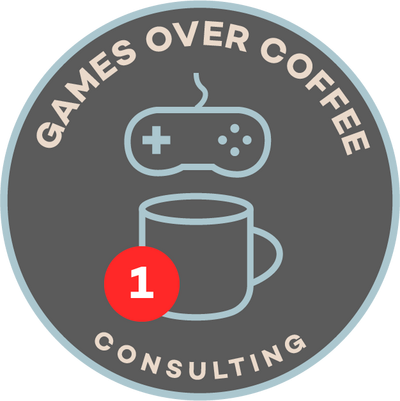
Making a game for yourself is easy.
Making a game for other people is hard.
Making a game for yourself is easy because you understand what it should feel like. You know when it's not working. But making a game for others is hard because, unfortunately, not everyone thinks like you. Not everyone knows what you intended.The problem is simple: You and the player are speaking different languages.Players intuitively understand a language called Game Design. And if your game doesn’t "speak" it well enough, they won’t understand it—and they won’t stick around to try.If you feel like your players aren't "getting" your game, we invite you to submit your game to us. We speak Game Design.
Not quite ready? We can still help!
past games
STUDIO & DEV TESTIMONIALS
Iteration & Refinement
Behind the scenes, the most well-designed and beloved games go through long and elaborate iteration processes and refinements. Every step of the way, feedback on the quality of the experience is essential.We critically investigate the elements of your game and understand its components so that you can continue to meaningfully iterate and reflect on your game’s design.
Let us help you answer the most important questions for your game’s success.
Are your players engaging with your gameplay?
Gameplay and interactivity amounts to everything that makes games unique to the medium and is at the center of player engagement.
Players are engaged and reach a Flow state when their goals are clear, they are in control, the skills and challenges are in balance, and they receive immediate feedback.Sound simple? If you’re reading this, you likely already know the answer.Entire fields of study are devoted to understanding the player experience and their interactions and engagement with games.Players explore and discover every little connection between your game elements to uncover a new, profound experience, and gameplay is the vehicle.
Are your players connecting with your theme?
Gameplay is king, but your theme should not be underestimated!
Ultimately, the goal of a game is to communicate a theme and experience to the player. Every game element works in unison to reinforce and communicate the theme.
Not every player will value your desired experience or theme, but no player will if it’s not presented effectively.
The theme can affect how players perceive the gameplay, including mechanics and even strategies.
The theme helps to convey the goal of the game.
Without a theme, you may create serious problems with tone, immersion, and engagement.
Do your players care about your story?
The story can be as simple as the aesthetics of the game, shown through visuals and audio. The story can be written narrative or dialogue. Even if there’s no story to write, games open a new world of emergent, player-driven stories and experiences.
Games provide a unique opportunity for your players to live out your story. You want your players’ motivations and agency to line up with your story to create memorable experiences.
The story can frame the player’s actions and motivations and give them meaning and direction, but it can also create rigidity or intense feelings of scripted linearity that clash with the player’s control, experimentation, and expression.
Even if a game contains a good story, it often tells or presents that story with little thought to how games function as a medium. Games communicate experientially through interactivity, and thus so does storytelling within games. Otherwise, players experience various dissonances that pull them out of the experience.
Each piece of your game connects to every other piece.It's complicated. We get it.We're here to help!
We want to help you as best as we can, and that includes ensuring that you get the most out of our service. Even if you're not ready for our service, we can help at no cost to you!
When do we recommend our consulting service?
We recommend our consulting service if:
You’re releasing a paid game.
You've developed a vertical slice and have done some prototyping and playtesting.
Your game is set up on Steam to accept Wishlists.
Are you releasing a free fan game on a different platform? We'd still like to hear from you!
But what if you’re not quite ready to jump in?Are you just getting started with planning and creating your game?
No worries!We've created plenty of free resources for you!
Free How to Get Started guide for new developers.
Our Free Game Design Consulting Videos
Our Free Game Design Case Studies on our YouTube channels
Newsletter for new free videos, guides, updates, and deals
Our Games Over Coffee Discord Server for picking developer brains
free consulting videos
See more videos on the Consulting YouTube Channel
reviews
of our free game design case studies

Squeaks D'corgeh
Shipwrecked 64
I like the fact you go in depth with these issues. It's so easy for critics to go like, "Oh, yeah the devs messed this up SO BADLY, they should be ashamed." While you do have a level of "How did this even happen" in the video, you actually go in depth on how to rebalance it. That's cool! And as a dev it's seriously appreciated! Great work!

SmoughTown
237K+ subscribers
Superb video dude. Thoughtful, well-edited, and spot on. Can't wait until your next video.

eurothug4000
122K+ subscribers
Been binge watching your videos :D Your discussions really are incredible, you constantly find new things to say that aren't repetitive or meaningless - hopefully by keep watching your vids, I can learn a lot more myself! Thanks for all the great content :)

BingBingWahoo
You milked the heck out of this topic! Your analyses are incredible. You're so thorough and finecomb every detail to justify your scrutiny in a fair and player-friendly manner. Nice knowledge-packed video all around, makes a dumbass like me feel like he understands your level of know how.Densely packed videos are a pattern here it seems. The detail and knowledge you cram into these lovingly made breakdowns feels three dimensional and thorough.You have a lot of endearment for what you review. The bundles of critiques come from more than one perspective and I greatly admire that. You don't stand firm on a single point of view and you give the devs the benefit of the doubt, while still making room for fair criticism. Good show!
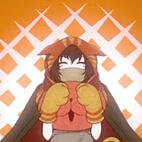
Quinntessential Skill
This is an excellent video. Very thorough, educational, and well put. I'm also glad, despite being reasonably harsh towards the problems, you gave multiple examples of benefit of the doubt, and tried to find examples of the boss being positive. It might go without saying, but I find many video essays don't consider counterargument enough, and often speak using overwhelming emotion while "thrashing" what they're attempting to criticize, which can make their argument seem less reasonable.

Squirrelfart
Well-formed, justified, and good-faith arguments, with a boatload of insight to accompany them. I really liked how you focused on counterarguments and weren't overly negative in your analysis.
Getting Started in Game Development
Types of Game Developers
Game Devs come in different breeds. How you picture your games and what you want to do with them will inform how you begin.
The "Natural Born Developers"
I don't mean you're better at development than anyone else, I just mean you have a yearning to make systems and mechanics and you probably don't waste your time reading "how to get started" guides like this.These types of developers have a tendency to jump straight into a game engine without any guidelines and just start experimenting. When someone like this makes a game, they're following a sense of curiosity, a mindset that happens to be exactly the right fit for a game engine.A "natural born dev" is great at moving pieces around and creating things but they lack a sense of direction or formality, which is usually necessary if you're trying to communicate specific experiences.If you fit this description, a good way to start adding more meaningful structure to your game is to try copying something else. I know that sounds odd, but firstly, you're not trying to publish this game, you're just trying to get the feel of what a structured game feels like. It may not be for you, so what better way to find out than to try?Get any extremely simple game that you like, and try copying it. What will happen during this process is structured thinking. You'll begin realizing that certain systems needs to be built before others. You'll begin to see a string of connective logic as you build more and more. The environments, the mechanics, the logic, the sounds...all this stuff has a structure to it that you'll discover as you build.Fair warning, this can be a slippery slope. When some devs begin copying a game, they get fixated on details, and end up making a carbon copy of another game which becomes their passion project. In the end, it'll get taken down for legal reasons. This is why this copying thing is only for practice. You're not publishing the game. You're just getting a feel for what structure feels like.You can, of course, publish the game privately and give it out for free as a "fan game", depending on what IP you're using. If you're curious, check out video game IP publishing rules in your local law.
The "Top Down Thinkers"
"Top Down thinkers" are people that design their game from the top down. They have a big idea, then fill in all the details as they go. These kinds of thinkers are great at designing frameworks and figuring out the purpose of everything in their game. Typically, these people will be able to create GDDs or "Game Design Documents" which contain everything in the game but on paper.A downside to this kind of thinking is that it can lead to "blank page syndrome" and opening a game engine can feel intimidating. It feels as if you created a list of high expectations and don't know how to begin.I'm very familiar with this kind of thinking, and it's personally stopped me from beginning a lot of my projects. What helped me a lot through this process were these two thoughts:1. What you're making will be bad, and that's ok. It's necessary to grow.
2. Break your goals down into smaller goals.This vast "blank page syndrome" in the game engine can feel really intimidating at first, but once you begin grasping it piece by piece, you'll come to find out that it's just a tool like anything else. It only responds to what you do with it.The mighty science YouTube channel Kurzgesagt once had a video that talked about how your brain creates stronger and stronger paths when you do the same thing over and over again. Practice makes perfect. It needs to be hard before it becomes easy. If it was easy, everyone would do it.Because "blank page syndrome" can stem from taking in too much detail at once, you should break the goals down into tiny goals. And I mean really tiny. So tiny that it seems absurd. The way you do this is by looking at a goal and determining if it has any "actionable steps."For example: "make a platformer" might be too big of a goal. Let's try something smaller like "make the character jump." But let's break it down even more. We could say "make the character respond to input" or even "make the game recognize input" or "make the game recognize the jump button." Once you get the button recognized in some way, then move on to making that input cause an action. Then from that action, make another action (like letting the character fall after jumping).After each of these little goals are achieved, you're on your way to completing the bigger goals. Just make sure to keep reminding yourself that you're practicing. Just make something, even if it's bad. That's fine. I was once told that you need to make 10 games before you make a good one.
The "Bottom Up Thinkers"
This is the type of developer that knows code inside and out. They can make just about any kind of functionality in a game and focus entirely on the logic and how efficient it can be. Typically, these people are programmers. They're amazing at getting things to work in a game engine but they might lack design, framework, or theme.Typically, the easiest barrier to overcome when you're a programmer is art. Using "programmer art" is usually the answer. You can use placeholder objects for just about everything, meaning lots of grey cubes.While this is sometimes frowned upon because replacing that art at a later time can be difficult, it's a great way to see your game in action. If what you're trying to do is simply see if something works the way you want it to, just make it with bad art and borrowed assets so you can see it in action. You're not publishing anything, just seeing what works. If you come to find out that it doesn't work, then you didn't waste any effort. And if you see that it does work, then you can go to the next step which is partnering with someone who can make art assets.And if that doesn't seem like a fun idea, you can totally stick with programmer art. The cool thing about video games is that they're much more than visuals. There are plenty of popular games that use programmer art. Some of the huge ones include Thomas Was Alone, Minecraft, and Dwarf Fortress.But beyond the art, Bottom Up Thinkers can sometimes have trouble with direction and design since they're so detail-oriented. One way to get around this is to simply NOT think about design. I know that sounds crazy coming from us, a team of game designers, but seriously, just make a lot of systems that work together, then start seeing what kind of design would complement them after the fact. This is how Portal got it's story with GLaDOS. This is actually how most of Valve's first-party games evolved.
So those are a few ways to get started, whether you're a Natural Born Developer, A Top Down Thinker, or a Bottom Up Thinker. Depending on your mindset, development can seem like an unfathomable amount of complexity, but remember that most AAA games are made with a really big team. It can be very difficult doing everything yourself, and it can lead to much slower progress. If you want to talk to other developers and chat about how to overcome specific issues, Games Over Coffee has a Discord Server with devs who can help! Check it out at Games Over Coffee's homepage.If you begin with tutorials, great! But be wary. See our section on Tutorials.If you begin by copying other games or breaking down games into bite-sized goals, we recommend the 20 Games Challenge.
Failure, Volume, Finish
Failure
Whether you’re procrastinating, lost or overwhelmed, or just unsure if you’ll enjoy making games, there will always be the #1 tip for getting started in any medium.Just Do It!As serious as that proverbial saying is, perhaps it could use a little extra push to help contextualize it and steer you in the right direction.Whether you’re a game developer, game designer, narrative designer, graphic designer, artist, musician, whichever piece of the puzzle, or all of them, you must embrace failure in order to reach success.Paul J. Meyer says, “success is the progressive realization of predetermined, worthwhile, personal goals.” Success is an ongoing pursuit of goals that you consciously set. Success is a journey. As you begin your journey to discover and pursue your passions—wherever that takes you in life—you will begin with a small, achievable failure, but that failure will be your success if you embrace it. When you embrace failure, you succeed in learning from your experience and mistakes, and you step toward your next achievable, greater success.So to embrace failure—to learn, to grow, and to develop great games—you must start by consciously setting yourself in the correct mindset. In whatever you pursue in life, set aside your ego, your doubt, your high expectations and dream project, because if your next goal is too lofty or too far off, anxiety and stress fall closely behind. Set your eyes and mind on the achievable, which is but one step closer to your dream.And even if you discover that you don’t enjoy the process of making games, then you’re still one step closer to discovering your true passion. Some people will try things to see what it’s like and may end up absolutely loving it. Some people may love games themselves or even may be skilled at some aspect of the game development process, but may end up hating the process behind game creation. No matter the result, it will be a net benefit for you.Thor of Pirate Software says, “You don’t have to make an amazing game. You just have to make your game. Make it bad. And then make a better one. And just keep doing it.”
Volume
Embrace failure. Go make bad games. Yes, you heard me. In any creative space, when you’re starting out, you should focus on VOLUME. That can be a tough pill to swallow in a world that focuses and harps on quality over quantity; and while it is true that quality is the end-goal, how do you think everyone who has already reached that goal got there? But even those people who aim for and create quality—the people that you may look up to or aspire to—even they still fail and learn every single day.Through volume, through quantity, through practicing with intention, you will quickly learn new lessons, then be able to apply them to your next project that you add into your volume.By taking small steps, you can define an equivalent value to each step. This means you’re able to understand what value and quality means for each step, milestone, and success, so you’ll then understand what value means for the next step, then the next, then the next. You’ll begin to understand the pieces and quality that go into some of your favorite games. This journey will also increase your confidence in what you value and what players value. Confidence and mindset are everything.
And, above all, FINISH YOUR GAME.
So What's Next?
Okay, now that you’re in the right headspace: what kind of game do you want to make?Don’t overcomplicate it. Create small games through tutorials (but be careful not to get stuck). Create small prototypes for Game Jams. Create free fan games for your favorite indie franchises (before pursuing a fan game, read Should I Create Fan Games in this guide). Upload them to Itch.io and Game Jolt. Get feedback from players who like or dislike your game. And remember, even if just one person likes your Game Jam game or fan game or whatever you make, then you’ve achieved an extra milestone in addition to your personal goals. Take what you can from the experience by talking to your players, learn by making changes that may improve (or worsen) your game, know when you’ve achieved your limited scope that you’ve consciously set for your game, then move on. Practice with intention. You’ll make incrementally better games. That’s it. You’re winning.Often, you’ll leave your Game Jam games behind as useful learning experiences, but maybe after some experience, you’ll want to expand your game a little or create a new game based on the premise but better as your next step. Eventually, you’ll reach the point where it’s time to create your first store page on Steam. Your game and Steam page don’t have to be perfect, but you’ll slowly become more familiar with how Steam works which will be a crucial experience for future games. And we’ll provide useful information along the way through our Newsletter. Remember: fail, learn, repeat. Small steps.So now what do you do? What game engine do you use?Now I’ll briefly pass you on to Thor, who has created a useful web page with additional information on how to get started. The sections that I think are the most important to you at this moment are What Skills Do I Need, What Kind of Game Should I Make, and Tools.The first section is for understanding that you don’t need to know anything to start making games.The second section is more on what I’ve been instilling here but from another perspective. Grinding through tutorials may not be for you (which leads into the Stuck in Tutorials section in this guide). All that matters is that you develop something small, one cobbled piece at a time. Or, you may find yourself more on the narrative design side with D&D (although, D&D can be deeply homebrewed to fix its many issues, but don’t bog yourself down with that).Thor also briefly hits on Game Design Documents (GDD). GDDs are important because they help you define your scope and they give you an excuse to research the tools that you may want to work with for your game. Otherwise, you may inadvertently become a victim of the common pitfall in any content creation business called “scope creep.” It is ideal to stick to your tight scope then move on to the next project.I’d recommend sticking with a simple GDD, such as the example that Thor links to. Once you begin work on bigger games, especially with a small team, you may consider using a wiki as your GDD.The third section is a short layout of what tools you may be interested in for your needs. It depends on the type of game you want to make, but don’t overthink it. Many of the skills that you’ll learn in one game engine carry over to others. Any of the options listed on that page are fantastic, and there are plenty of other game engines out there as well.One note: Thor has removed Unity from the list, and that’s because Unity has permanently broken trust with its users. However, you should at least be aware of Unity’s existence as one of the most used game engines in the world with an absolutely massive asset store and community behind it. Do your research, but more importantly, start making games!Then later, you’ll want to come back for Marketing and Where Should I Launch My Game. These are good goals to have, especially as you begin to share your games and build your community, but, again, one step at a time.At this point, feel free to leave and start learning. Bookmark this page to read more tips for Game Jams, if you get stuck in what is commonly known as “tutorial hell,” or if you should release free games and fan games. But for now, one step at a time. Come back when you’re ready. We may also update this guide or create separate guides with additional useful information, so to stay up to date with our free content, sign up for our Newsletter. We also release free consulting videos and game design case study videos.
Stuck in Tutorials
Are you stuck in tutorials? This is commonly known as “tutorial hell.”Firstly, if you’ve been learning game development piece by piece from a bunch of tutorials, and you feel stuck, then try buying a structured course on sites like Udemy or GameDev.tv. Concepts can start to click once you understand the big picture.(N.B. Courses on Udemy and GameDev.tv frequently go on sale. Never buy at full price.)Tutorials and courses can be incredibly useful. A crucial component of learning is discovering the new information in the first place, so tutorials and courses have a time and place throughout your journey. However, it can be easy to feel stuck or trapped and unable to grow out of them. If you’re not careful, you’ll end up with a bunch of completed tutorials but with no lasting knowledge.The goal is to get you working on your own projects through the typical day-to-day learning process of researching specific questions, reading documentation, and referencing pieces from online sources. Until then, how you approach tutorials and the completion of your own small, simple games will get you over the tutorial hump.During and after tutorials, apply what you learn to something new. This is where my advice to practice with intention truly comes into play. Ask yourself: what are you really taking out of the tutorial experience? If you’re only treating tutorials as step-by-step guides, then you’ll never truly learn. Instead, reinforce what you learn. Extrapolate the building blocks, understanding, and reasoning, and put them together. Develop a detailed understanding of everything the tutorial teaches. Expand on and make changes to what you build during the tutorial.Start with tutorials or courses at your appropriate skill level. Instructors will tell you what skill level they expect from you when coming into the course. For example, if you’re a brand new beginner trying to take an intermediary course, there’s nothing wrong with first learning basic programming (or other game fundamentals) through separate tutorials or courses. You don’t want to become overwhelmed and only type what the tutorial is typing, but instead, ensure that you’re keeping up in your understanding. Research more on individual topics. Write down what you learn, then write down what you currently don’t understand. You can always come back to this list to research and fill in the missing pieces. By extrapolating the building blocks and developing a detailed understanding of each small piece (by not only researching but practicing!), you’ll gradually build up your knowledge and repertoire on top of your existing foundational knowledge. Then, your new knowledge becomes foundational for your next steps. Don’t try to learn advanced topics until you fully understand and practice the fundamentals.Once you understand and practice the fundamentals, transition your learning into using those tutorials or courses as references. Start creating your own games. Make them small. Make them simple. Do not overscope your first games. Break each project down into smaller, bite-sized pieces. Do research and learn everything that you need to for that piece, then move to the next piece.If you’d like guidance in the creation of your non-tutorial games, I recommend the 20 Games Challenge.Be wary of free tutorials on YouTube. Most of them are low quality. They rarely employ best practices and may cause you trouble when trying to learn and understand the details and reasoning behind additions. Be selective with tutorials. You can still take bits and pieces from tutorials and make them your own. However, again, if you’re first starting, I’d recommend more structured courses. This isn’t to say that there aren’t great creators on YouTube who care about coding practices, like Code Monkey for Unity.
Game Jams
Game Jams are fantastic, but maybe not for the reasons that you think — because Game Jams are not about the games themselves, and they limit what you’re allowed to spend time on in the improvement of your development and production processes.Game Jams excel in learning how to prototype, scope, communicate, and work under deadlines. You’ll be able to network: you’ll meet people who you can bounce ideas off of or who share similar interests. You’ll begin to understand what managing scope and feature creep truly looks like. Additionally, deadlines can be effective motivators.Much of a Game Jam consists of designing and capturing the core idea of a novel prompt. That’s your focus, and your result, because you must capture the core idea within your managed scope and time limit. Restrictions often produce surprising results or learning opportunities. You may be surprised how little emphasis is truly on the development itself.Game Jams aren’t a particularly great time to learn everything you need in order to create your game. You’ll have a better time if you’re already comfortable with the tools and workflow for your game. However, Game Jams can also be an opportunity to introduce or experiment with new software or pipelines. You don’t have to be a master before throwing yourself into the ring.You can find current and future Game Jams on Itch.io.But what should you expect from your game? Will your game become a prototype that you can build off of or further develop? Not likely.The heart of a Game Jam is to be a recreational activity, one where you enjoy the process and have fun creating a throwaway game. You get to think about design and development in a different light because the requirements and circumstances are unique.There’s a fairly prominent survivorship bias in the Game Jam space. Even the greatest of developers can, and will, produce junky trash fires, despite the existing libraries and assets they bring into the project. It is not normal to come out of a Game Jam with an amazing prototype, and even less likely that the prototype could be fleshed out into a commercial release. Only worry about keeping your ideas small, focused, and snappy.Additionally, there really is no way to know whether a team cheats or not. Do not feel demoralized by some of the higher quality game submissions.
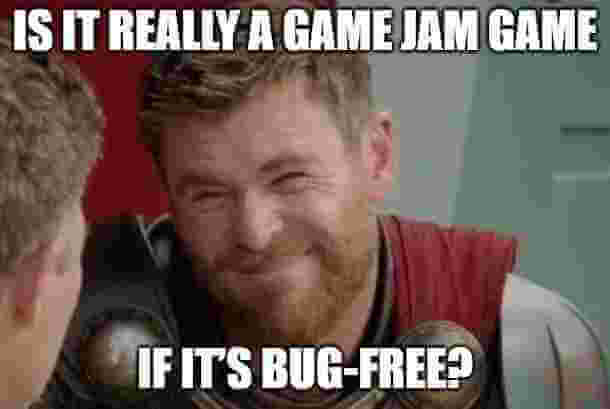
But okay, maybe you built a great prototype and now you desire to turn your Game Jam entry into a full-fledged release. If that’s your path forward, then first re-create the game from the ground up. Why? Game Jam games are inherently not scalable. They’re created with horrible practices and quickly become unsalvageable as they approach the finished submission. Your code is hacked together, and you’ll begin to lose track of what you built and how the code and systems work. It’ll likely take a significant rework to get your finished prototype into something resembling a full release.I want to reiterate, however, that you can still consider your Game Jam game, crappy or not, a finished game. And even if you didn’t finish your game, you will always take something out of the experience, which is far more important than the game itself. As important as it is to manage your expectations, it’s also important to recognize what came from the experience, even if you don’t recognize the impact yet.For most, if not all, of your Game Jam games, you’ll submit them, learn from them, then move on. Even if everything goes horribly wrong, you still spent the time learning and making mistakes, and that is valuable. You still enjoyed the process, networked, developed team-building or communication skills, and stretched your design brain in ways that only Game Jams can offer. That’s a success. Move on.
Should I Make Free Games?
Yes, when you’re first starting out, create small, free games for practice and experience. Some of them might be tutorial projects that you can share in communities or with your friends to express your excitement at your progress and achievement. Some of your free games may be small fan games of something you enjoy or are passionate about. All of your Game Jam submissions will be bite-sized and free to play. Most of your free games will be fantastic practice and experience that not many people will see, but from the people that do—whether players or fellow developers—it’ll be invaluable feedback.Remember: volume, and practice with intention.For now, that’s all you need to know. Once you break out of the free-game territory and into the beginnings of releasing games on Steam, you will know. That doesn’t mean people will buy your game or that you’ll have the next greatest hit, but it certainly prescribes your games with an appropriate value for the quality. And remember: this is yet another milestone and personal goal that you have achieved. You have succeeded once again. One step at a time.The simple fact is, people WANT to pay for quality, especially on Steam. The majority of reviews are actually mad that they can’t pay for the free Steam game called Moonring. I’m not kidding. Do not do this. (Even if you are the co-creator of the Fable series.)Some episodic games that release by chapter will release the first, very short chapter for free as an entry point or to assist (assist, not rely on) in gaining interest, feedback, and a community, such as mascot horror games like Indigo Park and Garten of Banban. The first, short chapter of the wildly successful Poppy Playtime is also now free, but only in light of Poppy Playtime 2’s release. Poppy Playtime 1 originally released with a $5 price tag.Steam users expect to pay at least something. Steam itself also encourages enough quality to be valued by its users through its $100 Steam Direct Fee, which they graciously allow you to recoup once your game reaches at least $1000 Adjusted Gross Revenue. Take advantage of your game’s value with a high enough price to offer appealing sales. Don’t solely rely on “free” to build your community, either. You’ll be building your community long before the release of your Steam game. Steam users will also perceive a game as lower quality if it has a lower price tag. If you want to release a free game, take advantage of demo sites like Game Jolt, or participate in Game Jams on Itch.io.Please note that the conversation changes in the live-service and mobile monetization spaces, but the monetization payment model isn’t necessary to know before getting started in the games industry. First, you must fail, learn, practice, and gain experience. Only worry about monetization models if you’re specifically targeting the mobile gaming industry, but even then, focus on making a good game first. One step at a time.
Should I Make Fan Games?
But what about fan games?First, I must preface with the following statement: This website does not constitute legal advice.Fan games can also be great practice. If you want to create a very short fan game for an existing game or franchise that you love, then go right ahead and make it (with caveats)! Game Jams and fan games, or whatever other small projects you want to create, all contribute to your experience.However, you must either keep your fan game personal (not released to the public) or ensure that your fan game is of intellectual property (IP) that has a proven track record of support for fan games. If there is no proven track record, then you must negotiate a license. Very rarely will you encounter IP that will not be defended in court. It is within their right. Often, you’ll hear stories of DMCAs or “cease and desists,” but these are gracious warnings and just the tip of the iceberg. By mishandling IP, you can ruin your life through lawsuits (which results in settlements and NDAs, so you’ll never hear about them). It does not matter what the fan game is or how silly or frivolous it is. And no, Fair Use does not apply to your fan game. Take it seriously.Luckily, there is a better route that you can pursue. The most common problem that I see in the fan game space is people mistaking fan games with inspiration. Your game can be strongly inspired by your favorite games in almost every single way imaginable without ever crossing the line into IP and legal territory. You can even reference your IP inspirations in the marketing of your game. You can still create your “fan game” without creating an illegal fan game.For example, if we look at one of the biggest indie franchises, Five Nights at Freddy’s (FNaF), fan games like Tealerland, Five Nights at Candy’s (series), and One Night at Flumpty’s (series) could have, and should have, been released as standalone, successful titles on Steam with a price tag because they don’t copy intellectual property. The only thing better than working on something you’re passionate about is getting paid to work on something you’re passionate about. There’s no guilt or shame in getting paid for your work and time. Your work and time must funnel into something, if at all possible, and you can still provide free demo versions on Steam, Game Jolt, and Itch.io.If you look at any number of FNaF fan games, they are all self-described fan games that could’ve simply treated FNaF as inspiration, like how any creative work in existence has inspirations (nothing is truly original). They could’ve instead been their own games and consequently sold as their own games.Please also keep in mind to not overscope a fan game.There are amazing devs out there like Scott Cawthon (FNaF) and Toby Fox (Undertale) who not only welcome but encourage fan games. There are some companies like Nintendo that infamously hate fan games and will immediately DMCA your game or mod, while other companies like SEGA now embrace fan games and had even hired fan-game creator Christian Whitehead to develop Sonic Mania along with official Sonic 1, 2, and CD ports (do not make fan games thinking this will happen to you. It will only happen to those least expecting).Companies will, and should, defend their copyright. Recognize fan games for what they are and don’t put all of your eggs in one basket. Do not invest nine years into Pokémon Uranium or ten years into AM2R knowing it’ll be taken down immediately due to obvious trademark and IP infringement. Again, keep in mind that cease and desists will be the least of your worries if you violate copyright with the wrong IP.If you create a bigger fan game and want to further pursue it, swap out the protected models or sprites and any other tweaks, then release it as your own game. Copyright doesn’t apply to a game idea or the mechanics but rather the expression of the idea. That’s exactly what Freedom Planet did. Instead of punishing themselves by sticking with IP in their Sonic fan game, they retained Sonic as their inspiration, retained their passion and efforts, and their good game was rewarded for it. In addition, they can now say that Freedom Planet is their game. This is what inspiration and passion is truly about.Fan games should only be very short passion projects of very specific IPs with no other goal than self-improvement. If you want to expand beyond that limited scope, there are better options that benefit you across the board. You don’t have to give up your passions and inspirations in order to create your own game.
We offer 2 types of Game Design Feedback
Game Design
Philosophy Feedback
Being so close to the project can often blind you from an outside perspective. Our philosophical feedback is given to try and get you to reconnect with your game's core principles, rediscovering why you made it in the first place. This deeper understanding of your decisions frames any improvements you might want to make and clarifies why they're important.These types of improvements can lead to:1. A more thematically cohesive experience
2. A more engaging story
3. Clearer sense of progression
4. A more unique game
Design Philosophy feedback price:
Donation based - pay what you want
Game Design
Systems Feedback
We study and analyze your game's mechanics and UX. We take a holistic view of your game (gameplay loops, theme, & core mechanics), then we'll help you identify what pulls away from your vision or doesn't communicate your goals.These types of improvements can lead to:1. Better mechanical flow
2. Clearer communication
3. A smoother experience for the player
4. An overall more interesting and engaging/fun game.All of our game design feedback is based on your specific goals. So while every piece of your game is studied, some details may not need improvement.
Systems feedback price:
$60 fee + small percentage of game's income after feedback is given
Game Design Philosophy Feedback
Being so close to the project can often blind you from an outside perspective. Our philosophical feedback is given to try and get you to reconnect with your game's core principles, rediscovering why you made it in the first place. This deeper understanding of your decisions frames any improvements you might want to make and clarifies why they're important.These types of improvements can lead to:1. A more thematically cohesive experience
2. A more engaging story
3. Clearer sense of progression
4. A more unique game
Design Philosophy feedback price:
Donation based - pay what you want
Game Design Systems Feedback
We study and analyze your game's mechanics and UX. We take a holistic view of your game (gameplay loops, theme, & core mechanics), then we'll help you identify what pulls away from your vision or doesn't communicate your goals.These types of improvements can lead to:1. Better mechanical flow
2. Clearer communication
3. A smoother experience for the player
4. An overall more interesting and engaging/fun game.All of our game design feedback is based on your specific goals. So while every piece of your game is studied, some details may not need improvement.
Systems feedback price:
$60 fee + small percentage of game's income after feedback is given
